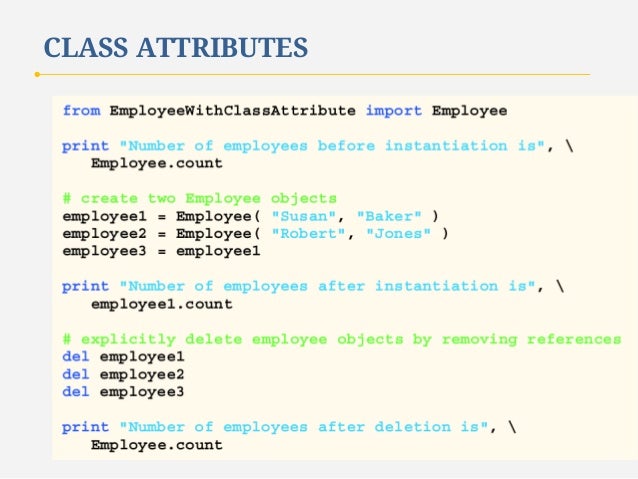This document is a quick cheat sheet showing how the PEP 484 typeannotation notation represents various common types in Python 3.
Class is the fundamental element of Object-Oriented Programming in Python. In this video, we will learn about Python Class and Class Attributes. Traditional syntax: SIGNAL and SLOT QtCore.SIGNAL and QtCore.SLOT macros allow Python to interface with Qt signal and slot delivery mechanisms. This is the old way of using signals and slots. The example below uses the well known clicked signal from a QPushButton.
Note
Technically many of the type annotations shown below are redundant,because mypy can derive them from the type of the expression. Somany of the examples have a dual purpose: show how to write theannotation, and show the inferred types.
Variables¶
Python 3.6 introduced a syntax for annotating variables in PEP 526and we use it in most examples.
Built-in types¶
Functions¶
Python 3 supports an annotation syntax for function declarations.
When you're puzzled or when things are complicated¶

Standard 'duck types'¶
In typical Python code, many functions that can take a list or a dictas an argument only need their argument to be somehow 'list-like' or'dict-like'. A specific meaning of 'list-like' or 'dict-like' (orsomething-else-like) is called a 'duck type', and several duck typesthat are common in idiomatic Python are standardized. Words like poker face.
Classes¶
Python Slots Class Attributes
Coroutines and asyncio¶
See Typing async/await for the full detail on typing coroutines and asynchronous code.
Python Class Add Attribute
Miscellaneous¶
Python Set Class Attribute
Decorators¶
Decorator functions can be expressed via generics. SeeDeclaring decorators for the more details.